Understanding Paediatric Bronchoscopy – Key Insights
Dec 23, 2023
In the field of paediatric bronchoscopy, bronchoscopy is a diagnostic procedure used to visualize the respiratory tract and identify any issues that may be affecting a child’s breathing. Paediatric bronchoscopy is necessary when other diagnostic tests, such as chest x-rays or CT scans, fail to provide a clear diagnosis or when a child is not responding to treatment. In this article, we will explore the various aspects of pediatric bronchoscopy, including what it is, when it is necessary, and the benefits and risks associated with the procedure.
What is Pediatric Bronchoscopy?
Pediatric bronchoscopy is a diagnostic and occasionally therapeutic procedure that involves examining the airways of children using a bronchoscope, a long, thin, flexible tube equipped with a camera and light source. The bronchoscope is inserted through the nose or mouth and passed down the throat into the airways.
The bronchoscopy procedure in children differs from that in adults because the size and architecture of the airways vary with age. Children’s bronchial tubes are smaller and more flexible than those of adults, and the procedure must be adjusted accordingly.
During this non-invasive procedure, the healthcare provider can see the trachea, bronchi, and lungs’ inner linings. They can take tissue samples or biopsies, remove obstructions, and wash out mucus or foreign objects. Pediatric bronchoscopy is performed under sedation or general anesthesia, depending on the child’s age and severity of the respiratory condition. The procedure typically lasts for up to an hour.
Indications for Pediatric Bronchoscopy
Pediatric bronchoscopy is a diagnostic procedure used to assess the respiratory system in children. There are several medical conditions and situations where pediatric bronchoscopy may be recommended. These indications may include:
- Chronic cough: If a child has been coughing for an extended period, paediatric bronchoscopy may be suggested to help diagnose the cause of the cough.
- Recurrent infections: Pediatric bronchoscopy may be suggested if a child is experiencing recurrent respiratory infections, including pneumonia or bronchitis.
- Airway abnormalities: If there is suspicion of an airway obstruction or abnormality, pediatric bronchoscopy may be used to assess the condition of the airways.
- Aspirated foreign body: Pediatric bronchoscopy can be used to remove an aspirated foreign body from a child’s airway.
- Suspicion of malignancy: If there is suspicion of a tumor or malignancy in a child’s respiratory system, pediatric bronchoscopy may be recommended.
- Unexplained respiratory symptoms: If a child is experiencing unexplained respiratory symptoms such as wheezing, shortness of breath, or chest pain, pediatric bronchoscopy can help identify the underlying cause.
The American Thoracic Society provides guidelines and criteria to help healthcare professionals determine which patients may benefit from a pediatric bronchoscopy. These guidelines include assessing the child’s symptoms and medical history, as well as determining the potential risks and benefits of the procedure.
Benefits of Pediatric Bronchoscopy
Pediatric bronchoscopy offers numerous benefits in the identification and treatment of respiratory issues in children. One significant advantage is the ability to obtain accurate and direct diagnoses of respiratory conditions, such as foreign body aspiration, tracheomalacia, and airway anomalies that may be difficult to detect through other diagnostic methods.
In addition, bronchoscopy allows for targeted treatment plans that address the underlying issues, resulting in improved respiratory health and quality of life for children. The procedure is also minimally invasive, reducing the need for extensive surgery and medical interventions.
Overall, pediatric bronchoscopy is a valuable tool in the diagnosis and treatment of respiratory issues in children, providing numerous benefits and advantages for both medical professionals and patients.
Safety Considerations in Pediatric Bronchoscopy
Pediatric bronchoscopy is generally considered a safe procedure for young patients. However, as with any medical procedure, there are potential risks and complications that need to be taken into account.
Potential Risks of Pediatric Bronchoscopy
- Bleeding
- Infection
- Bronchospasm (temporary narrowing of the airway)
- Perforation of the airway
- Reaction to anesthesia or sedation
- Fever
These risks are relatively uncommon and can be minimized by taking appropriate safety measures and precautions.
Measures for Ensuring Safety in Pediatric Bronchoscopy
Healthcare providers take various steps to ensure the safety of young patients undergoing a bronchoscopy procedure, including:
- Checking for allergies or medical conditions that may affect anesthesia or sedation
- Monitoring the patient’s vital signs throughout the procedure
- Using appropriate equipment and techniques for the patient’s age and size
- Providing post-procedure care and instructions for a seamless recovery
- Using antibiotics when necessary to prevent infections
Parents or guardians should feel free to discuss any concerns or questions they have regarding their child’s safety during the bronchoscopy procedure.
Preparing for Pediatric Bronchoscopy
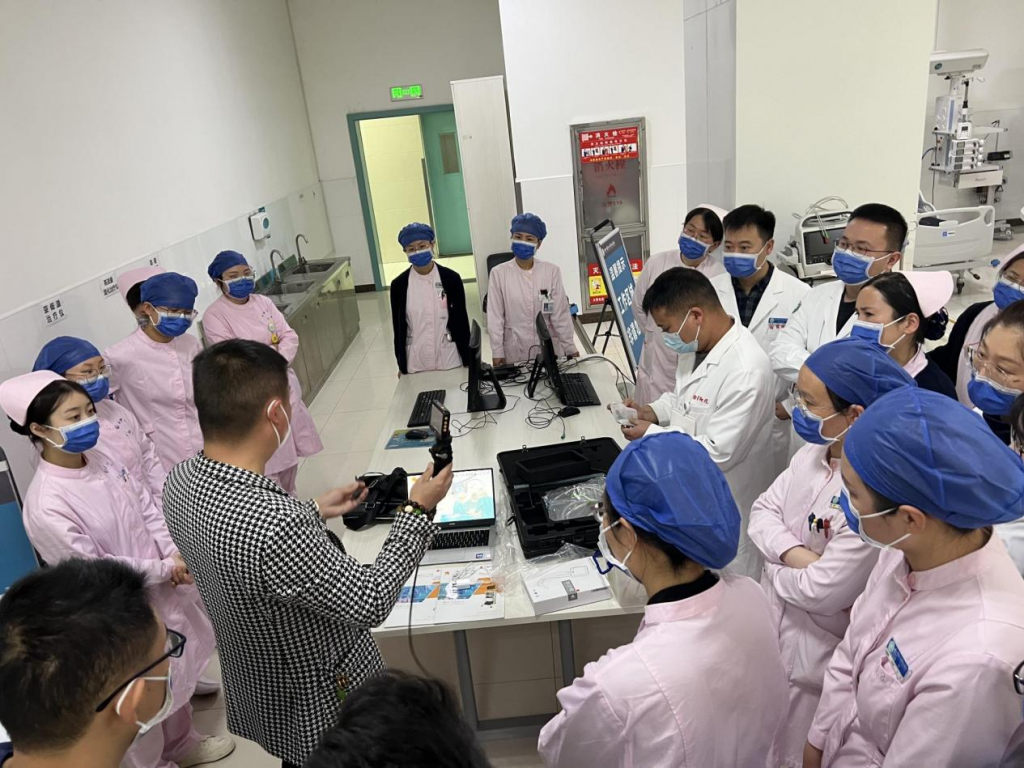
When a child is scheduled to undergo a bronchoscopy, it is important that they and their caregivers are well-prepared both physically and mentally.
Prior to the procedure, the medical team will provide detailed instructions regarding dietary restrictions, medications to avoid, and other specific preparations that are necessary for the child to receive anesthesia or sedation safely. Parents or guardians should follow these guidelines carefully to ensure the child is prepared and comfortable.
It is also important to communicate with the medical team concerning the child’s medical history and any allergies they may have. This information will help healthcare providers design a safe and effective plan and avoid any potential complications.
If the child is feeling anxious or scared, it is important to reassure them and explain the procedure in an age-appropriate manner. Parents or guardians should encourage the child to ask questions or express any concerns they may have beforehand.
Preparing for a pediatric bronchoscopy requires close attention to detail and clear communication between caregivers and healthcare providers. By following the necessary steps and being adequately prepared, parents or guardians can help ensure a successful procedure for their child.
The Pediatric Bronchoscopy Procedure
The paediatric bronchoscopy procedure is typically performed under general anesthesia to ensure the child remains comfortable and still throughout the examination. The procedure involves inserting a bronchoscope, a thin, flexible tube equipped with a light and a camera, through the mouth or nose and into the airways.
Before the start of the procedure, the healthcare provider will discuss the process with the child and the parents or guardians. The team will prepare all necessary equipment and administer anesthesia or sedation, depending on the child’s age and medical condition.
During the procedure, the healthcare provider carefully examines the child’s airways and lungs and collects tissue samples or performs other diagnostic tests, if needed. Depending on the findings, the healthcare provider may use the bronchoscope to remove any blockages or foreign objects from the airways or to deliver medication to treat the condition.
After the procedure, the child will be taken to a recovery area where healthcare professionals will monitor their vital signs and ensure a smooth recovery from the anesthesia. The child may experience a sore throat, coughing, or mild bleeding for a few days after the procedure, but these symptoms typically resolve on their own.
Overall, the pediatric bronchoscopy procedure is a relatively safe and effective way to diagnose and treat various respiratory conditions in children. With careful preparation, open communication, and close monitoring, healthcare providers can ensure the best possible outcome for young patients.
Recovery and Follow-Up Care after Pediatric Bronchoscopy
Following a paediatric bronchoscopy procedure, children will require appropriate recovery and follow-up care to ensure their optimal health. Here are crucial measures that parents and caregivers should take after the procedure:
Post-Procedure Instructions
Parents or caregivers should follow the healthcare provider’s post-procedure instructions to minimize the risk of complications. These instructions may include:
- Monitoring the child’s breathing and alertness
- Providing plenty of fluids and a soft diet
- Administering prescribed medication, such as pain relief medication or antibiotics
Potential Side Effects
Children may experience side effects after bronchoscopy, which could include a sore throat, coughing, or mild chest discomfort. These side effects are usually mild and should disappear within a few days. However, parents and caregivers should seek medical attention immediately if their child experiences any of the following symptoms:
- Fever of 101 degrees Fahrenheit or higher
- Excessively prolonged coughing or wheezing
- Difficulty breathing
- Excessive bleeding
Importance of Regular Check-Ups
Parents or caregivers should schedule regular check-up appointments after the procedure to monitor the child’s condition. These follow-up appointments are essential in detecting any potential complications and ensuring that the child’s respiratory system is healing correctly. In these appointments, healthcare providers may perform pulmonary function tests or prescribe further treatments if necessary.
Overall, by adhering to the proper post-procedure instructions, monitoring for potential side effects, and scheduling regular follow-up appointments, parents and caregivers can assist in ensuring the child’s speedy and safe recovery after pediatric bronchoscopy.
Alternatives to Pediatric Bronchoscopy
While pediatric bronchoscopy is a valuable diagnostic tool for many respiratory issues in children, it may not always be the most appropriate option. Thankfully, there are alternative diagnostic methods and treatments that may be considered.
Imaging Tests
Imaging tests such as chest x-rays, CT scans, and MRIs can often provide valuable information about the respiratory system without the need for invasive procedures. Doctors may recommend these tests as an alternative to bronchoscopy in certain cases.
Lung Function Tests
Lung function tests measure how well a child’s respiratory system is working. These tests can help identify issues such as asthma or chronic obstructive pulmonary disease (COPD) and guide appropriate treatment plans. Spirometry and peak flow meters are two examples of lung function tests.
Medication Therapy
In some cases, respiratory issues in children can be managed with medication therapy alone. Inhalers and nebulizers are common devices used to deliver medication directly to the respiratory system, where it’s needed most. Antibiotics may also be prescribed to treat bacterial infections.
Surgical Procedures
In select cases, surgical procedures may be necessary to diagnose or treat respiratory issues in children. Examples include a bronchial biopsy or removal of foreign objects from the airway. However, these procedures may carry greater risks than non-invasive alternatives and should only be considered when absolutely necessary.
It’s important to note that the choice of diagnostic method or treatment will depend on the specific respiratory issue at hand and the child’s individual circumstances. It’s essential to consult with a qualified healthcare professional to determine the most suitable option and course of action.
Latest Advances in Pediatric Bronchoscopy
Medical advancements continue to enhance the effectiveness and safety of pediatric bronchoscopy procedures. One development involves the use of narrow-band imaging (NBI) technology, which provides enhanced visualization of the airway’s structures and eliminates the need for dye. Another innovation is the development of virtual bronchoscopy, which uses CT scans to create 3D models of the airway, aiding in diagnosis and treatment planning.
Research is ongoing in developing new bronchoscopy techniques and enhancing existing ones. For example, doctors are exploring the use of endobronchial ultrasound-guided transbronchial needle aspiration (EBUS-TBNA) to obtain tissue samples from lymph nodes in the chest. This technique provides higher accuracy and avoids invasive surgery.
Finally, pediatric bronchoscopy is becoming more personalized, with doctors utilizing genetic testing to determine the best course of treatment for each patient. With these cutting-edge advancements, the future of pediatric bronchoscopy looks promising in improving outcomes for children with respiratory issues.
Cost and Insurance Coverage for Pediatric Bronchoscopy
While pediatric bronchoscopy is a valuable diagnostic tool for children’s respiratory issues, it can come at a significant cost to families. The exact price of the procedure varies depending on factors such as the extent of testing required, the location of the medical facility, and the type of anesthesia used.
Fortunately, many insurance providers cover all or part of the cost of pediatric bronchoscopy. Families are advised to contact their insurance company to verify their coverage benefits and eligibility.
In the case that insurance coverage is not sufficient or unavailable, financial assistance options may be available. Some medical facilities offer financial aid to families who meet certain income criteria, and organizations such as the National Foundation for Transplants and the UnitedHealthcare Children’s Foundation provide financial assistance for medical procedures.
Parents and guardians of children undergoing pediatric bronchoscopy may also benefit from reaching out to local non-profit organizations and community resources to explore additional financial support options. It is important to remember that no child should go without necessary medical care due to financial concerns.
Conclusion
In conclusion, paediatric bronchoscopy is a crucial diagnostic tool for identifying respiratory issues in children. By allowing healthcare professionals to visualize the airways and lungs, bronchoscopy helps in obtaining accurate diagnoses and guiding appropriate treatment plans.
Moreover, the procedure is relatively safe when performed by experienced professionals, and the risks of complications can be minimized with appropriate preparation and care. However, parents or guardians should always consult with their child’s healthcare provider to weigh the benefits and risks of the procedure for their specific case.
Overall, early detection and treatment of respiratory issues in children are crucial for their long-term health and well-being. With advances in medical technologies and techniques, pediatric bronchoscopy continues to improve in safety and effectiveness, providing hope for better outcomes for young patients.
FAQ
What is pediatric bronchoscopy?
Pediatric bronchoscopy is a medical procedure that involves the insertion of a bronchoscope, a flexible tube with a camera and a light, into a child’s airways to examine the respiratory system and diagnose various lung conditions.
When is pediatric bronchoscopy recommended?
Pediatric bronchoscopy may be recommended to diagnose and treat respiratory issues in children, including persistent cough, recurrent pneumonia, unexplained wheezing, suspected foreign body aspiration, or evaluation of lung diseases and abnormalities.
What are the benefits of pediatric bronchoscopy?
Pediatric bronchoscopy provides various benefits, such as accurate diagnosis of respiratory conditions, guidance for appropriate treatment plans, visualization of airway abnormalities, removal of foreign bodies, and sampling of lung tissue for further analysis.
Are there any risks associated with pediatric bronchoscopy?
While paediatric bronchoscopy is generally considered safe, there are potential risks and complications involved, including bleeding, infection, damage to the airways, and adverse reactions to sedation or anesthesia. These risks are minimized by experienced healthcare professionals and proper pre- and post-procedure care.
How should a child prepare for a pediatric bronchoscopy?
Prior to the procedure, the child and their parents or guardians will receive instructions on fasting, medication, and restrictions on eating or drinking. It is essential to follow these guidelines to ensure a safe and successful bronchoscopy.
What happens during a pediatric bronchoscopy procedure?
During a paediatric bronchoscopy, the child is usually given sedation or anesthesia to minimize discomfort. The bronchoscope is inserted through the nose or mouth, and the airways are examined. If necessary, samples, such as mucus or lung tissue, can be collected for further analysis.
What is the recovery process after a pediatric bronchoscopy?
After the procedure, the child will be monitored in a recovery area until they are fully alert and stable. It is common to experience minor side effects, such as a sore throat or cough, which typically resolve within a few days. Follow-up care and regular check-ups are important for optimal recovery.
Are there alternative diagnostic methods to pediatric bronchoscopy?
Depending on the specific respiratory issue, alternative diagnostic methods may be considered, such as pulmonary function tests, chest X-rays, computed tomography (CT) scans, or magnetic resonance imaging (MRI). These alternatives are determined by the child’s healthcare provider based on individual circumstances.
What are the latest advances in pediatric bronchoscopy?
Advancements in technology and research continue to improve the field of paediatric bronchoscopy. This includes the development of smaller and more flexible bronchoscopes, novel imaging techniques, and the exploration of targeted therapies for specific lung conditions in children.
How much does pediatric bronchoscopy cost, and is it covered by insurance?
The cost of paediatric bronchoscopy can vary depending on factors such as the facility, geographical location, and specific procedures performed. Insurance coverage varies, but many insurance plans provide reimbursement for medically necessary bronchoscopies. It is important to consult with the insurance provider to understand coverage and potential out-of-pocket costs.
Categories
Latest Articles
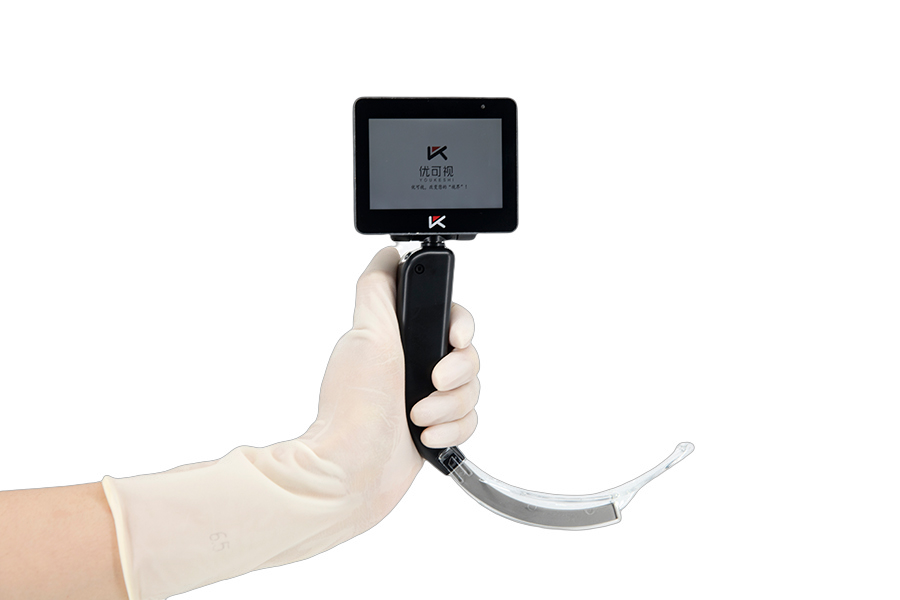
Essential Laryngoscope Parts and Their Vital Uses
The laryngoscope is a vital medical instrument that allows doctors to examine the throat and vocal cords with precision. By providing a clear view of the airway, it plays a crucial role in various medical procedures, particularly in airway management. This tool is essential for ensuring patients can breathe properly, as it facilitates safe and ... Read more
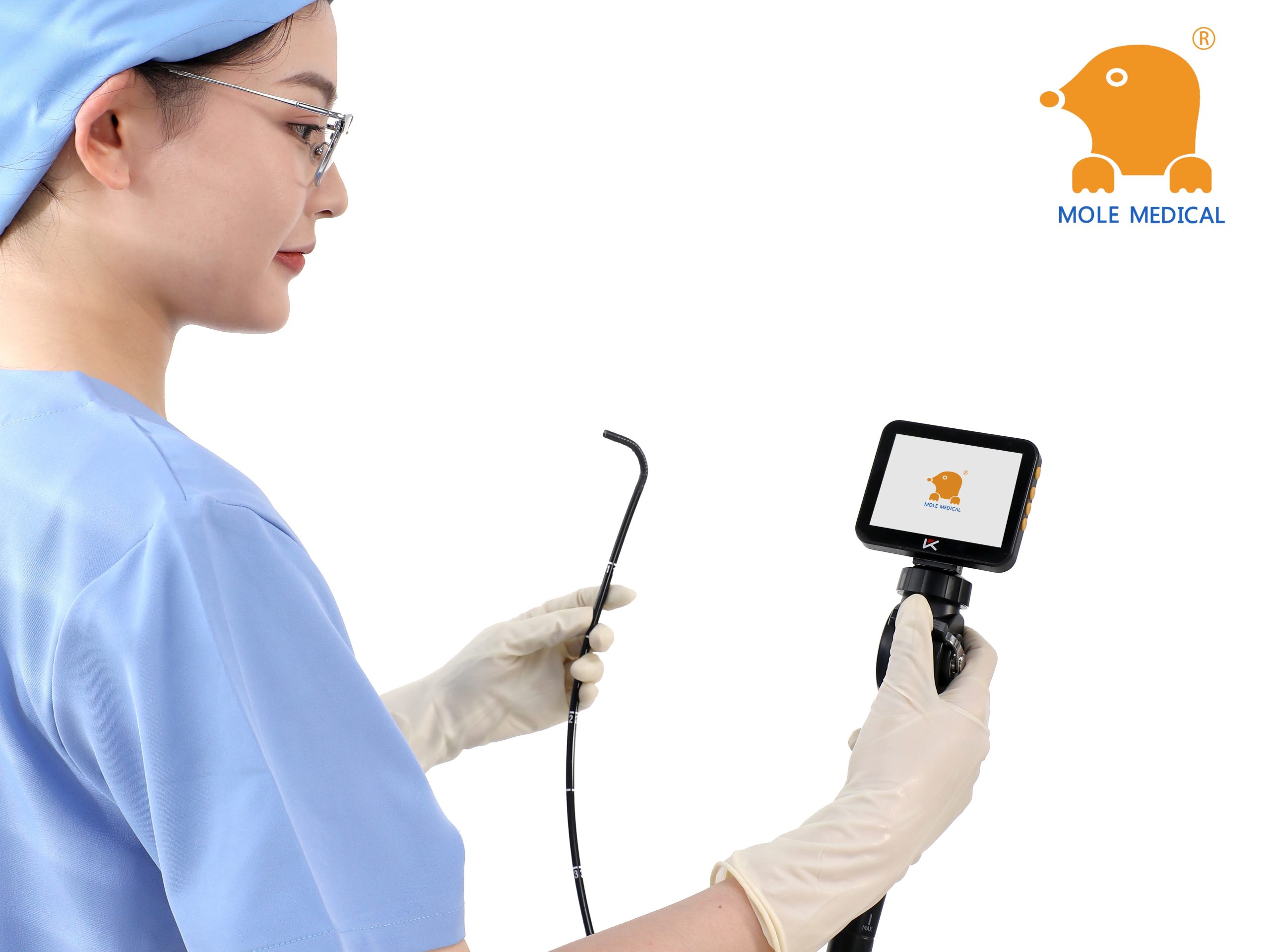
From cleaning to maintenance: a holistic management strategy for Mole medical electronic bronchoscopes
In the modern medical field, electronic bronchoscope is an important tool for the diagnosis and treatment of respiratory diseases, and its accuracy and safety are directly related to the treatment effect and life safety of patients. Mole Medical's electronic bronchoscopes are widely recognized for their superior performance and precise diagnostic capabilities. However, to ensure that this high-end equipment is always in top condition, a comprehensive management strategy from cleaning to maintenance is essential.

More than ten years focus on the field of anesthesia Jiangsu Mole Medical, providing airway equipment for thousands of hospitals around the world
More than ten years focus on the field of anesthesia Jiangsu Mole Medical, providing airway equipment for thousands of hospitals around the world
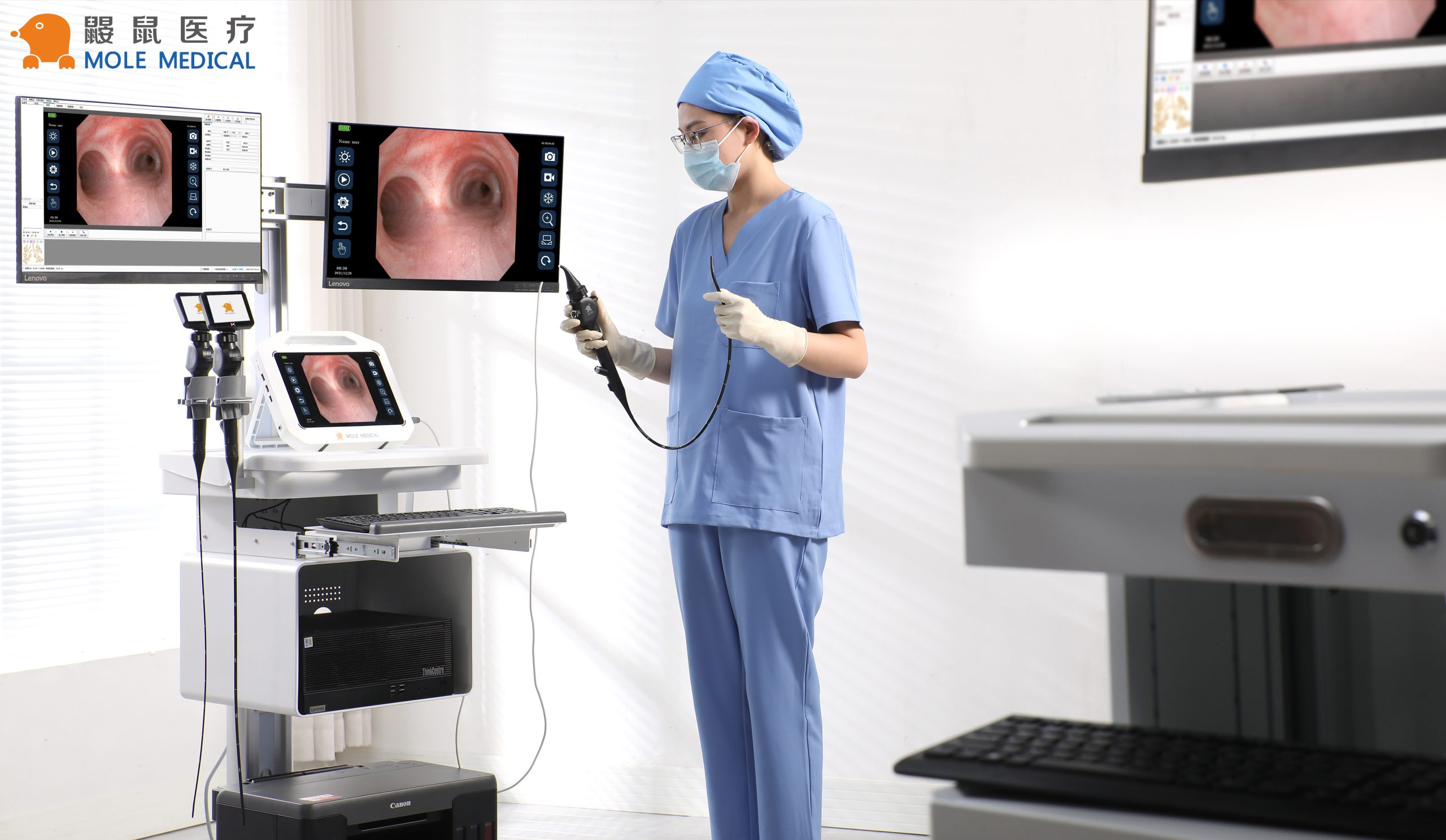
Emergency department essential: Mole medical portable video endotracheal intubation scope in the actual advantages of pre-hospital emergency
In the complex environment of pre-hospital emergency treatment, establishing artificial airway quickly and accurately is one of the key steps to save patients' lives. The traditional endotracheal intubation operation under direct laryngoscope has some problems such as limited field of vision and difficult operation, especially in the case of patients with limited neck movement, excessive oral secretions or anatomic abnormalities, and the success rate may be affected. In recent years, with the advancement of medical technology, portable video endotracheal intubation scopes have gradually become an important tool in emergency departments. Among them, the portable video endotracheal intubation scopes of Mole Medical show significant practical advantages in pre-hospital emergency care with its unique design and performance.
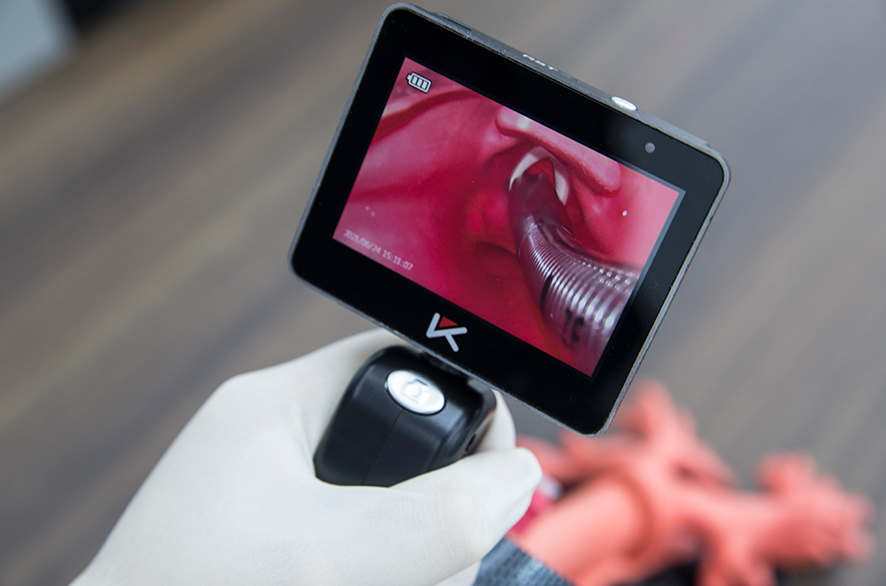
Disposable Video Laryngoscope for Adult Intubation: Advanced Airway Management
Why is good airway management important in emergencies and surgeries? Doctors and nurses must quickly and safely place a breathing tube in many patients. This is especially hard when the airway is difficult to see or reach. Video laryngoscopes help with this. They have a small camera that shows a clear view of the airway. ... Read more



